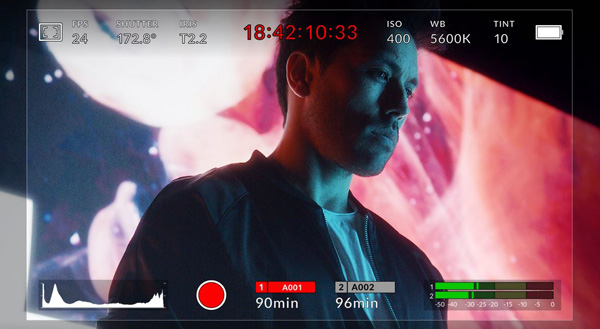
‘Making Their Mark’ is a seven-part series that follows six teams in the Australian Football League (AFL), giving viewers an unexpected view into the league’s teams, players and coaches. Shot during the 2020 season severely affected by COVID, the series mixes game footage with footage from inside the clubhouses, executive rooms and the player’s personal lives.
To get close to the action on the field and up close to the players and coaches, Melbourne’s JamTV Australia chose to use a series of Blackmagic URSA Mini Pro 4.6K G2 cameras as the main cameras for the production. Pocket Cinema Camera 6Ks were used for gimble and higher speed shots.
Multicam, High Speed
DP Matt Koopmans said, “The reason we went for the Pocket Cinema Cameras and URSA Mini Pros was the need to shoot high speed. Both of these cameras have this ability, at a price that worked for the production. For some of the games, we used up to five Blackmagic camera set ups, with two on isolated feeds, two in the team rooms and one shooting for colour commentary.”
Shooting through the entire 2020 season, Jam TV captured more than 2,500 hours and over 650 terabytes of footage, all shot in Blackmagic RAW 8:1, and employed more than 20 camera operators across Australia. To capture all of the various types of shots in those 2,500 hours, they took advantage of the camera’s ease of use, and the Blackmagic OS’s ability to switch quickly between frame rates.
Matt said, “The ability to switch quickly from off speed to 25 fps was a big advantage for shooting sports documentary material. With this kind of functionality available to us, the Blackmagic cameras came into their own.

Blackmagic OS
“This was the first time some of the operators had ever used Blackmagic cameras. I would talk through the specifics each week of what was required for the shoots and the guys adapted remarkably well to using a camera that they hadn’t had very much experience with. From an operational point of view, the cameramen found the cameras very easy to adapt to and, more important, we were very happy with the look the cameras delivered.”
All ingest and offline editing was handled by Spark Post Production with colour correction for the series done using DaVinci Resolve Studio by Marcus Herrick of BluePost.
HDR Twinkle
Describing some of the challenges he faced with colour correction for the series, Marcus said, “In colour grading the series, the biggest challenge was matching Blackmagic RAW with SDR broadcast game footage. The broadcast footage has a very defined ‘look’ baked in and, as it was SDR, often had clipped highlights. Thankfully Blackmagic RAW has a lot of dynamic range. It also keys well, which made matching different grass and varying skin tones easier.
“Each game shot had a minimum of three separate keys for skin tones, football pitch and highlight control. Bringing the broadcast footage's highlights into the HDR world, especially stadium lights, gave them a type of HDR ’twinkle’. This required a careful mix of curves and keys to separate the highlights and remove colour contamination to bring them up above 100 nits and still look good. I was able to do this all efficiently with DaVinci Resolve.”
To help manage and grade older footage or game footage shot with other cameras or drones, Marcus used DaVinci Resolve Studio’s colour space transform and group grading tools.
“Group grades were really helpful when grading a game from multiple sources. Being able to set up a look once for each camera and then have it apply to all the instances of the shot in the game, was fantastic,” Marcus said.

HDR and SDR Deliverables
For the series, BluePost was also tasked with delivering in both SDR and HDR, which included versions in UHD HDR10, HD HDR10, UHD SDR and HD SDR. To do this, they depended on DaVinci Resolve Studio’s tight integration with Dolby Vision for a direct conversion from HDR to SDR, and handled playback in any HDR format using Blackmagic Design’s DeckLink or UltraStudio capture and playback devices.
“Having had both HDR and SDR deliverables, DaVinci Resolve Studio’s Dolby Vision tools made this project much more achievable. Being able to grade in HDR and then have Dolby Vision Analysis give you an SDR version was a massive time saver. To make it even better, the ability to grade HDR on one monitor and simultaneously see SDR on a second monitor, gives you confidence that both versions will look the way the client wants them to look,” Marcus said.
“The director GiI Marsden and executive producer Luke Tunnecliffe had a clear vision that this show would give access to professional Australian rules football that has never been seen outside of the clubs. Quality was key in this production, and acquisition and finishing had to be c ompleted to a very high level,” said Jason Felmingham, Spark Post Production’s head of post production. www.blackmagicdesign.com




